Leaderboard
Popular Content
Showing content with the highest reputation since 16/03/24 in all areas
-
Good afternoon all, Bit of a mammoth project for me. It's taken five months and one week of (almost) daily modelling, and thus well in excess of 200 hours. It could (and maybe should) have consumed so many more. The basic kit is from Academy and the decals are a scheme provided by AOA Decals that represents a CH-53E from HMM-264 in 2006. The sheet covers multiple types and thus some of the markings are required from the kit sheet, and some (like the national insignia on the horizontal tail surface) need to be painted. Additions are numerous: Added UHF antenna above and below fuselage Scratchbuilt GPS antenna on fuselage spine Modified antenna mount on starboard side of spine Peanut light added to tail tip Eduard and Archer resin rivets all over (of several pitches) Resin wheels (Armory - nice but don't fit) Resin exhausts (ResKit - nice) Resin air intakes (ResKit - awful) Resin tail rotor (ResKit - nice) Resin main rotor hub (ResKit - mediocre (at best)) Blades dropped Blades magnetised (i.e. removable) Rotor blade hub magnetised Resin refuelling probe (ResKit - nice) Refuelling probe magnetised Cables for NVG sensor arm Cables for engine intakes Cable for refuelling probe Scratchbuilt search lights lower front fuselage Exhaust shroud made from foil Scratchbuilt engine intake struts Scratchbuilt Lifting eyes Scratchbuilt Maintenance struts x2 Eduard brass (inside and out) Pitots replaced with brass tube Rotor hub wired ANYZ connectors dotted all over the place AOA decals NVG sensor removed Chaff buckets modified to be empty There's a lot wrong with it, but I won't list that here. On to the photos... Thanks for looking and comments welcome. Jon94 points
-
This one has occupied me since Christmas. It's not an easy kit to build, with quite a few significant pooh traps, not least the 5 part fuselage. As I often find with big kits, I was getting a little tired of it by the end. Nevertheless, I am very pleased with the results and now struggling to find a place to display it! The kit comes from BPK (£99.99 via Jadlam) and the decals from Air Graphics (£21.99 via Hannants). Sadly, the kit does not have an opening weapons bay, and the nice looking Air Graphics resin one was out of stock by the time I looked. Given the problems I had fitting the existing weapons bay door covers, I suspect that fitting the resin might have been challenging. Equally sadly, the RAF have not procured wing pylons or anything to hang on them, so my wings are bare, although I am looking at how I can put together a set of SPEAR 3 Missiles to hang from the wings in the future. Brush painted as usual with Humbrol enamels (I used 127 Ghost Grey, which is a little too blue for Boeing Grey (gray?), but matches my own photos quite well) with a darker grey wash in the panel lines. I added two cockpit crew and one side observer, just to give the kit a bit of life! Like with the E-3D kit I did a few years ago, I have managed to leave the wing and centre section loose (at the cost of a slightly gappy join) which will help with storage and transport. Photographing kits of this size always poses me a problem, so I am afraid I have had to photoshop some extraneous detail (my conservatory, house and cherry tree) out of some of the pictures.92 points
-
I've just finished this in the FROG GB and thought it might be of interest to a wider audience: The aircraft is well-photographed example from 60 squadron, based in the North-West Frontier (present-day Khyber Pakhtunkhwa), some time before 1930 (leading blue stripe on rudder). I picked up the kit for four quid from a vendor at SMW in 2018, and the conversion was inspired by an article in the May 1966 edition of Meccano Magazine by Doug McHard. A few notes: The engine is an accident. I expected to have to source one from elsewhere and I just started messing around with the kit one and some scraps for fun. It ended up looking too good for me to throw away (but unfortunately not much like a Jupiter) so it stayed... The bombs are left over from a Airfix DH4 kit. They look longer than the 112lb bombs in the photos (don't know whether they are a different earlier type or simply not accurate) and as a result I've put them side by side instead of in tandem on a single rail. There is such a lot of extra detail that could be added to these inter war general purpose machines (bomb rails for instance); it's sometimes hard to know when to stop when you find yourself in a rabbit hole. I don't have any figures appropriate to the period or location to pose alongside. Shorts and solar topees were the order of the day. I need to build a DH4 to go with this, my DH9 (Airfix conversion) and 9A (KP) so I can pose them for a family group photo. Apart from giving the tyres a sandy dusting, I didn't do any explicit weathering. The model got handled and touched up so much when I was rigging and adding all the detail that it ended up looking pretty well used without any extra help! Another inspiration for this build was @hendie's magnificent 1/48 CAD design and 3D print scratch build of a 28 Squadron Wapiti here on BM. It was interesting to me to see how different the three builds were to each other, driven by the different modelling eras, techniques and starting points. The WIP for my build is here if you are interested, and the Doug McHard article can be found here. Thanks for looking, Adrian85 points
-
Following my comment on @John Masters's thread, I realised that I had not shared that build that I completed at the end of 2020. If my memory is any good, this aircraft is an F.6 that received the rear part of an FGA.9 with the parachute housing and not an FGA.9 as Revell state on the box. Final pictures: The build: Moulding: This picture is typical of what was in my box: Flash, heavy sink marks and soft surface details caused by the moulding issues. Nothing major but frustrating nonetheless when it comes to a kit that is not supposed to be short run... Having said that, a fired of mine who had acquired several boxes right after the kit was released did not have the same issues. Cockpit: The cockpit tub is very nice OOB and the seat was improved using my usual process (lead wire, Tamiya masking tape strips, plasticard, aluminium foil, Magic Sculp and stretched sprue): The cockpit sides were detailed using plasticard and a punch-and-die: The backplate was the area that needed more improvements: I also added a collimator before gluing the windshield: Once painted, it looks really nice. I did not use the decals but painted everything by hand using a sharpened toothpick and Vallejo acrylics: Air inlets: It is advisable to add a shim of plasticard where the wings meet the fuselage around the air inlets. Otherwise you will be left wth a nasty gap at the top and bottom junctions: The air inlet cone is missing and the resulting empty space is quite noticeable. I made some off 0,2mm plasticard sheet: Painted white at the front and going black at the back to give an impression of depth: Parachute housing: It had a very nasty sink mark and the panel lines had nearly disappeared. It took quite a bit of time and effort to bring it back to a decent condition: I had to rescribe and add missing rivets to quite a few hatches / covers, mostly on the wings. Overall fit: In spite of the moudling issues, the overall fit was good and little filler was needed: Painting and weathering: The model was painted using Mr Hobby Aqueous over an Ammo One Shot black primer: Grey: I sprayed a highly thinned H331 DSG in a mottling fashion, building up slowly the coverage and letting the black show through around the panel lines. Then, I made some highlights using H337, insisiting on raised details and the centre of the panels. I finished with some post-shading using Panzegrau. Green: I used H73 DG follosing the same process and made highlights by adding H313 sand to the dark green. I toned down the effect with several light mists of H73. Red: I primed the area in white, then applied a coat of yellow and finally the red base coat (H13). I applied some shadows using a highly thinned dark brown. I then applied the decals, though most roundels , the code and fin flash were painted using masks cut with my Silohouette: I like to get the landing gear and weapons out of the way as quickly as possible, as I consider them as a chore: Then, I applied the washes: I used True Earth Neutral brown on the underside, Black on the camouflage and Dark Brown on the red. The weathering was done using mostly felt tip pens and aluminium and dust weathering pencils: Finally I applied a light coat of VMS matt varnish. In hindsight, I probably should have been more restrained on the weathering. But at the time, I wanted to give it a worn out look. On some pictures, they are in a worse condition than shown here with large patches of white showing underneath the red on the wings, for instance.85 points
-
Hello, There are already plenty of Mustangs here so one more shouldn’t be a problem I guess 😊. A slightly unusual pony, not a glamorous fighter but a humble utility animal. F-6C - a reconnaissance version of venerable P-51C. Additionally in French colours (best regards to all French friends 🙂). A very cute Arma Hobby kit, built almost entirely out of box. Except of exhausts (Eduard’s). And wheels (Eduard’s). And I used some additional Eduard’s PE parts in the cockpit. So, not so OOB after all 😁. The construction was fun, Arma Hobby kits are well engineered and manufactured. I decided not to fill wing panel lines (I’m not very orthodox about it) but instead I went for slightly unrealistic concept of painting gun bays covers with a different shade than the rest of wings 😊. The painting is based on Mr Color paints (C08, a few Super Metallics) and Alclad (Magnesium) for exhaust cover panel. Enjoy and comment! Marcin84 points
-
Hello, some pictures of my new build Mirage F1B by Special Hobby in 1:72. Add CMK wheels, seats and engine, Eduard interior PE set as well as a Master pitot. Used the decals OOB and some by Berna for an EC2/30 aircraft based at Colmar in 2009.80 points
-
I'd built the Airfix Valiant quite a while ago and it was interesting to note the advances made by the company in the 5 years or so between the two kits being released (2011 - 2016 according to Scalemates): a clear step up in refinement and build quality, which they've continued pretty much ever since. Next on the production line is the Vulcan so I'm looking forward to see how it stacks up against their much more recent releases. The size & shape of the Victor makes it hard to photograph, let alone display but I'm quite pleased with how it turned out. Thanks for looking, J.A.77 points
-
Ahoy there, lads! Latest update from the Admiralty. She's done. But first, some background. Back in 2021 you'll recall i built the Airfix Buccaneer. I did an extensive build thread on carrying out the backdates, as well as my musings on kit construction and painting. The end result, as you see here was very well received on Britmodeller when it was first posted in RFI. It was also very well received on the contest circuit and it placed second at the IPMS Nationals in Las Vegas, in 72nd scale Multi Engine Jet-Large. And then, from the department of, "You can't make this stuff up"...THIS happened. In a cruel twist of fate, the rather tall and narrow-based 2nd place trophy toppled over and smashed the Buccaneer like a wreaking ball. Let's just say i was extremely upset. Still am. Anyway, i was inconsolable for months over this. Not the way you want to come home from the IPMS Nationals. I didn't bin the model, but looking at it made me sad. Brian Scott (F-104Nut) offered to help by sending me parts from his unfinished Buccaneer kit. When i received it, i discovered the model was already largely assembled and so i thought... why not finish it? And so i did. Presenting Buccaneer Number 2, XN980. The Accidental Buccaneer. Before i throw down more pretty pictures, let's get the Executive Briefing out of the way. Kit Used: Airfix Blackburn Buccaneer S. Mk. 2C, kit no. A06021. Scale: 1/72nd (It's British. What other scale would it be?) Decals: Xtradecal for Squadron Modex numbers and Serials, Squadron Crest and ROYAL NAVY titles; balance comes from the (excellent!) Airfix decal sheet. Markings: No. 801 Squadron, RNAS Lossimouth, seen during her initial deployment to HMS VICTORIOUS in 1966. Cockpit: Eduard ZOOM Photo etch cockpit set, Martin Baker Ejection Seats by Aerocraft. Wheels: Eduard Pitot Boom: Master Additional Modifications: Pretty much summarized in the first Buccaneer Build, but lots of carving and filing away of modifications acquired over the years, to correctly backdate the model to 1965-66 standard. Chief among these were: Carving away the aerodynamic fairings adjacent to the intakes (the so called 1044 Mod), and a slimming down/ re-profiling of the aerodynamic "Bullet" fairing on the back end of the vertical fin. Upward angled "Ironing Board" removed from rear cockpit. Hole for landing light on nose gear strut filled. Inboard flaps were lowered and Flaperons drooped at slightly different angles to represent hydraulic pressure bleed-off. Black-painted plastic discs punched out and stuffed in backs of rocket cannisters to hide seams. Weight reduction holes in air brake panels drilled out. Frangible glass disc drilled out of kit fuselage and clear disc fashioned from Butyrate and a punch and die set (largely obscured by decal). TAT and static probes thrown away and replaced with scratchbuilt items (more easy to manipulate). UHF TX/RX antennae replaced with Evergreen strip stock (again, it was just easier to fabricate these from scratch, rather than to clean up the kit parts). Brake stacks cut from outboard landing gear forks in order to accommodate Eduard wheel /brake assemblies. Axle holes drilled out and ultimately replaced with Plastruct or Evergreen rod axles. Paints: Mostly Tamiya, to include their white surface primer (decanted from spray can) and extra dark sea grey mixed from scratch according to guidance found on Replikator.club. Glos and Semigloss clear finishes are Mr Color GX-112 Super Clear UVCut for gloss and Mr Color 181 for semigloss. I said it before, i'll say it again: This is a brilliant kit by Airfix. It is extremely robust when fully assembled and doesn't creak or groan when handled like earlier Buccaneer offerings. Just the right amount of detail without being monstrously delicate or fiddly to put together. I'm hoping that Airfix will eventually relent and offer us a Supermarine Scimitar and a Sea Vixen (both versions) to augment this very nice model and the Phantom. Comment, as always is welcome. Right then. On with the photos.... As ever, thanks for shopping. And now, i really need to get back to this Phantom....75 points
-
I have been wanting to build one of these for a while. Luckily I was in a local model shop, and they had one on their second hand shelf!. For it's age, first released in 1984, it is an impressive kit. Recessed panel line, a reasonable interior, with a good representation of the ejector seat pods. There aren't many aftermarket sets, which is not a problem really. I dressed up the cockpits with plastic card and some cockpit decal placards, the rest was out of the box. The bare metal finish was achieved using paints from Mr Color and Tamiya, and a lot of masking tape! The B-58 is an incredibly futuristic looking machine for it's time, and it still looks highly advanced today. Thanks for looking Angelo.74 points
-
The top scoring non-German fighter pilot during WW2 was Eino Ilmari "Illu" Juutilainen with 94 confirmed combat victories (though he claimed 30 more), all against the Soviets. He had flown "obsolete" Fokker D.XXI and Brewster Buffalo B-239 fighters before he had a chance to get something more modern - a Messerschmitt Bf 109. Today the Brewster Buffalo is frequently considered one of the worst fighter planes ever made. But achievements of pilots like Ilmari Juutilainen, Hans Wind, Eino Luukkanen and other Finnish aces proved otherwise. In competent hands and under right circumstances the Buffalo turned out to be a really vicious killer. Ilmari Juutilainen had been flying the Buffalo BW-364 until 1943 when he was transferred from LLv.24 to LLv.34 armed with new Messerschmitts Bf 109G. He concluded his “Buffalo adventure” with 34 victories (the second best score after Hans Wind with 39 victories). The Hobby 2000 kit (Hasegawa repack), built completely out of the box. This was a quick but surprisingly fulfilling project. I liked this simple kit a lot 🙂 Enjoy and comment at will 🙂 Marcin73 points
-
As a rule I stay away from bi-planes, too many wings, and then there is the rigging!😲 However, I have always liked the look of the 0/400 and I was challenged to build the kit by my son! The kit was a struggle, the fuselage being made up from four panels was a bit of a challenge, and the whole structure has an unwanted twist in it which I couldn't correct. The other thing I did was to sand off the overdone rib detail on the wings & tail and simulate the rib tape with thin strips of masking tape secured in place with liquid poly. I also added an etched scarf ring for the front gun with the Mini World item, which includes a beautifully cast Lewis gun, and I used two more after market Lewis guns from Gaspatch. The model was painted with Tamiya acrylics. Thanks for looking Angelo.73 points
-
Another Desert Storm warrior in my collection. Hasegawa kit, Aires avionic bays and exhaust nozzles, Eduard armament, Brengun wheels, Quickboost seats and Flying Leathernecks decals. Happy modelling!72 points
-
North American Harvard Mk.IIa, No. 62 Air School (Central Flying School), Bloemspruit, South Africa 1944/45. I used Xtradecal decals to finish the model and also Reskit resin wheels as they look better than the kit offering. I enjoyed the build a lot and I can recommend the kit to anybody but a perfect beginner.71 points
-
Dear Friends This is the Revell Ju 88A-1 which has the short squared off wings compared to the A-4. The best part of the Revell kit is the beautiful cockpit. I felt some of the fuselage panel lines where a tad deep so sanded the whole fuselage right down, particularly near the cockpit. Here I added the Eduard PE cockpit and Eduard MG-15 machine guns. The decals are from the Xtrakit BoB set. This aircraft went out to bomb Woodley airfield in October 1940 near Reading under clouds, couldn't find it so went to alternate target of Hatfield and hit the de Havilland factory (with Mosquito prototypes damaged). The airfield defences weren't asleep and the hit the Ju 88 which crash landed shortly afterwards. Hope you like it? Andrew69 points
-
Hi all I have been working on this one, an Airfix 72nd Beaufighter Mk.X converted to an FAA Mk.II. This was done using an Alleycatz late Mk.II conversion, kindly supplied to me at a very reasonable price by fellow BMer @2996 Victor, thanks Mark , you're a star. The Airfix Fuselage, cockpit and undercarriage are used with the new wings, engines, props and tailplanes from the conversion. I used the prop blades from the CMK early conversion along with the undercarriage doors as they are more detailed. I used the Eduard PE cockpit set and added some extra bits for the interior. The flare Shute and fairing were made from brass tube and brass sheet The model was brushpainted using Humbrol enamels. The weathering was fading the paintwork and an oil wash . With exhaust stains are weathering powders. I used the High Planes painting and decalling guide that I found online this shows the cowlings were painted differently on Port and Starboard. Here are some photos I didn't have the right decals so had to use decal spares and paint them yellow. Barracuda cast early Beaufighter wheels used and some brass rod used to make the framing on the front of the undercarriage legs, lead wire and brass wire used for the brake lines Pleased with this one especially after finishing a Dallachy Beaufighter in January I would like to thank everyone who has offered support and encouragement throughout the build. Thanks for looking in Chris68 points
-
Hi All, I had almost convinced myself that at 74 years old 1/72 models were too small for tired eyes then along comes Special Hobby with this little gem an aircraft I have wanted to model for many years in fact I have the C scale conversion from many years ago squirreled away in a safe place! The kit is beautifully engraved and has amazing cockpit detail as well as wheel bays. It does need very careful assembly and there are small amounts of flash and mould lines to remove. I found the engine bulkheads needed their diameters reduced before the wings would close up flush but generally the parts fit was very good. Painted in a mix of Tamiya acrylics and Revell Aqua then for the first time I used an AK panel line wash, The decals are very thin and settled down well but they need to be treated with care or they can fold over on themselves. Very pleased with the end result so maybe I can dig some more 1/72 kits out of the pile what do you think?68 points
-
Hi All, Here is my second attempt at building a 1/48 Javelin. The first was using the Dynavector kit and on completion was handed over to the FAST museum in Farnborough and was last seen on display there. This one is using the excellent Airfix rendering which was a joy to build and a real test of masking skills! I purchased two sets of Master pitots and found the A Sqn decals in a Alleycat conversion set other decals came from the kit ones. Paints used were entirely Revell Aqua and finished off with a coat of Xtracrylics Satin Varnish. This aircraft was used for some time at Boscombe as as chase plane and was very accurately calibrated for airspeed readings. It came close to being written off when a new airframe fitter fitted a belly tank release catch the wrong way round so a lot of airframe had to be removed before the catch could be freed ( So I am told by one who was there). The full size airframe was retired to the Duxford museum. MODeller67 points
-
As my own rule dictates, the next topic can be made when the previous one has disappeared from the first page.:) And soon my arsenal of finished builds will be empty too. But in the meantime, I offer you an elegant bird. Farman F 223 1/72 from Azur box. Mostly straight out of the box, with a few small details added.67 points
-
This is the Airfix model of the B-17G. A lovely kit with loads of detail. I built the kit out of the box, apart from adding a set of decals from Kits-World so I could make a B-17 from the 423rd bomb squadron of the 306th Bomb Group based a Thurleigh in Bedfordshire, a few miles from where I live. The kit didn't include the pitot tube or "towel rail aerial" for some reason so I scratched them out of wire & plastic card. I used Tamiya lacquers for the natural metal finish and I used raw umber oil paint to weather the model, creating streaks of dirt, oil leaks etc. A great kit that went together with no problems. Thanks for looking Angelo.67 points
-
Hi all. This is the first model with desert decoration that he has made in many years and the second in total. I hope that the mistakes I have made in this one will not be made again in an Arma Hobby 1/72 Hurricane MK IIC that I have in stock. I would have liked to have placed the ventral fuel tank but I realized that I had not placed it once I had glued the model to the base. Now I think it could cause damage that is difficult to repair and if it were, I honestly don't feel like undertaking it. I really enjoyed this kit from Special Hobby and I can't recommend it enough. Thanks to everyone who has followed the build and encouraged me with their kind comments. This can be seen in the following link. Andrés.66 points
-
This is the Hobby2000 rebox of the Fujimi OA-4M. To the very nice base kit, I added Quickboost seats, Eduard masks, Kelik 3D cockpit decals (first time using these, and they are excellent), a Brengun chaff/flare dispenser, and Eduard LAU-10 Zuni rocket pods (pods in the kit are vastly overscale). Markings are from the kit. The colours are Vallejo FS36320 over FS36495, with Tamiya XF-81 for the green as this seemed a good match for the colour of the kit decals. This was my first attempt at a scheme where the camo has to match up with the decals and I think it turned out fairly well. Chris65 points
-
This is my first final reveal on here so please be kind. I am aware that there is a lot of flaws and imperfections in my build but for me I was really chuffed with the progress I have made over the last couple of years with lots of new things to learn and especially airbrushing not so long ago. so here it is for your thoughts. Its a great little kit. expensive but lots of detail that i did my best with. Couple of fit issues I struggled with namely the canopy but that is probably more me than the kit.65 points
-
As they say "another one bites the dust" Very nice model to work with, pilot form White Stork Miniatures. WIP Cheers Mick64 points
-
When I first saw this kit previewed on the net over a year ago I said I want it!!! And I was very happy with it, hats off to Airfix for this one, great kit, well thought out construction and well fitting parts too. It took me just under three months to build and it was time enjoyed. I would like to thank all those who followed, commented and liked on the WIP. Paints: Tamiya, Mr Hobby, Alcad2. Varnish: W&N Galeria. Filler: Hardly none. Thank you for looking. Simon.64 points
-
Hi Everyone! I would like to present you with freshly finished lovely kit from Eduard no 82101. Pretty straight forward kit from the box. Few bits and pieces to rescribe and rivet, but not a huge amount of work. I have filled the wing panel lines with a mixture of VMS Black Flexy CA and their Filler Powder. That works great as it is fast drying, non shrinking and easy to sand. Only the area around the guns was filled with Mr Surfacer 500. I have also replaced gun barrels with hypodermic needles which improved the look in my opinion. Drilled the exhaust pipes and filters on the lower nose. The kit provides decals for the tail, but I have decided to mask it and paint it and I'm happy with the result. Painted with Tamiya LP-8 over white and Black Mr. Surfacer. Nose red is a AK Interactive RED. Anti glare painted with Olive Drab. Fuselage has been painted over satin black with Mr.Color Super Fine Silver, where the wings are painted with Tamiya LP-38 Flat Aluminium. Weathered with Abteilung's oils and some panel washes from AK. Then everything sealed with satin on the wings and the rest of the coloured parts, and gloss on the fuselage, bare metal surface. I had a massive disaster during the build. Once I painted the tail and nose, I have followed an advice from more experienced friends from the model club, to use LP-11 as the aluminium colour, but that for some reason turned out not nice, so I covered it with Extreme Metal Polished Aluminium which was much better. Then I sealed it with Gauzy Agent pre decaling. This is where I think it went wrong. Well not from the start. Stencils were great, film was easy to remove and I was absolutely amazed with the result. The problem started with the larger decals, where they did not stick properly and despite waiting over 2 days, I still removed the film with part of the decals.. Thanks to club friends for supplying me with their decals from the same kit. I stripped all the paint back to plastic (apart from the nose) and painted it again with the paint mentioned above. This time decals went on better and I also restrained from removing the film. And here we have the result, let me know what you think: Thanks!63 points
-
Hello all. Here’s my latest from the shed, not my usual fare, but a change is as good as a rest they say. The SR.A/1 jet flying boat fighter concept was brought about because of the success of Japanese water borne aircraft during WW2. In 1943 the Air Ministry funded the development of three Saunders Roe designed aircraft which were completed after the war had finished. The first flight being in 1947. After evaluation the aircraft was not deemed capable of matching the performance of land based aircraft and was not ordered. Two of the aircraft crashed during testing and were lost. The pilot of one was rescued by the occupant of a support launch who dived into the water fully clothed after the aircraft suffered a landing accident. He pulled the pilot free from the cockpit of the sinking aircraft saving his life. That pilot was Eric ‘winkle’ Brown who became one of the most famous test pilots of the time. The kit was typical short run, taking a bit of work to get it together. I replaced the supplied flimsy PE nose grill with silver nickel rod, other than that it was built from the box. It was finished in a mixture of Humbrol 27001 and 27002 and sealed using Xtra color varnishes. The base is from coastalkits. A nice change from the norm I enjoyed the challenge of this build. Here are a few pics, hope you like it. Thanks for looking. Pete62 points
-
Hello all from the shed. First finished model of 2024. So, there I was making Chinook HC1 BN for a friend when crack went the canopy while I was giving it a little polish 😧. Nothing for it but to buy another Chinook model for the canopy. As the HC1 was the Airfix kit I thought I would get the Italeri kit for a change. However, it was remarkably similar (in fact identical) to the Airfix one apart from the decals. Just as well I suppose as I was swapping bits between kits. The HC1 built in parrallel has lots of Black Dog resin on it, as I enjoyed using those parts I bought Black Dogs snow shoes for this Italian cab build. I also added a little bit of scratch work in the form of aerials and the decals are a mix of Airfix, Italeri and Model Allience. Its finished using Xtra Color paints and varnishes and is panel lined and weathered using Flory wash and Tamiya powders. Not the best fitting kit but I do like doing a helicopter (two in fact) for a change. I'm looking forward to seing how the new Airfix moulding of the Chinook is in comparison to the old moulds. The model depicts a Chinook CH-47C of the Italian Army. 1 RGPT. “Antares” based at Viterbo in 1992. Here are a few pics. Hope you like it. Thanks for looking. Bravo November soon. Pete62 points
-
Hello all, here is my latest completed model. It is the Special Hobby Firefly converted to a U Mk.9 target drone. This aircraft was built as an FR Mk.5 in 1950 and converted to a drone at Ringway in 1955. It ended its days at Hal Far in August 1960, crashing on landing after escaping being shot down by a Royal Navy destroyer! The base kit is the SH Firefly Mk.V “foreign service” boxing. I scratch built the various drone addons including the wingtip pods which were made from Su-27 ECM pods! The rear cockpit was rebuilt based on plans provided by @CJP to whom I am extremely grateful. The paints used were mostly Mr Hobby, the decals came from the spares box and the final finish was VMS’ excellent satin varnish. There are a few inaccuracies, mainly the fonts for the various code numbers and letters aren’t 100%. The elevators are the wrong early style provided in the kit, but the time I found out it was too late to make the change without serious rework. The wingtip pods need a few more details adding but this will come in due time as I get round to it. As it stands it makes a different addition to the shelf and certainly stands out amongst its contemporaries! Chris61 points
-
Italeri kit with 'no additives' unless you count the outstanding Sky decals. Paints are Mr Color lacquers and Tamiya acrylics all mixed until 'they look right' - no exact formulas here. I temporarily tack-glued the ventral gondola section into place for the painting sessions, then removed it so I could add the beam position Lewis gun. It was a calculated risk but seems to have worked-out for me. As for the kit - IMO, one of Italeri's best. The fit is generally very good, the internal details, whilst basic, do come alive with some careful painting and dry-brushing. I wouldn't recommend opening the large dorsal hatch aft of the 'hump' unless you're willing to go all-in with the etch & resin interior sets. The open side door and especially the built-in air-stairs are a bit clunky and maybe one day I'll replace that with some etch (yeah right). Not my best work by a long shot, but looks very cool in my cabinet. Please go-ahead and make any comments or ask any questions. Cheers from NZ. Ian.59 points
-
Hello all...new here! Following on from this intro... https://www.britmodeller.com/forums/index.php?/topic/235138184-another-middle-aged-bloke-coming-back-to-the-hobby/ ...here's a Spit that I've just built with my 8 year old lad, the first model I've built for about 30 years, the first one he's ever built, and the first one I've ever bothered with filler/airbrush etc. He built it (with a bit of help on tricky bits), I painted it. I know there's a lot wrong with it (down to my painting mainly!) but we are really pleased with how it's come out. The kits have got a lot better in the many years I've been away! Lots of lessons learned, and I know it's not a patch on some of the incredible builds I've seen on here, but we really enjoyed the build, such a good thing to do together learning skills, patience, dexterity, physics, engineering and history, and not a screen in sight! He's now onto a P-47 on his own, and I'm doing a Gannet. Cheers!57 points
-
Hello All, so, this is my first modelling attempt in over 30 years. I had to basically learn everything from scratch, as well as shamelessly scouring the forums for similar builds and useful techniques. Some of the Users and threads I took ideas from are named below, but to coin a phrase, "if I have seen further, it is by standing on the shoulders of giants...". So thanks to all of you who have shared your WIPs & RFIs so the rest of us may learn and improve our own skills. Anyway, enough sentimental waffle. The subject should be well known to most on here. In 1964, XM968 was used as one of the chase planes for the only TSR.2 to fly, XR219. I chose this particular scheme because a) I wanted to do a Lightning, b) I have a TSR.2 on the go and fancied a diorama with the two (but have since changed tack to make it a B1/GR1 scheme, but another in development colours will follow later), and c) I wanted something reasonably challenging to develop my skills. And the NMF and short-run kit have taught me a lot. I've made lots of schoolboy errors along the way. Nevertheless, I think it's turned out quite well; there are a lot of annoying issues with the finish due to handling errors and doing things in the wrong order, but as a first attempt it'll do I think. Kit - Sword 1/72 EE Lightning T4/T5 - comes with etch and resin seats & exhausts Extras - Master metal pitot, SAC metal landing gear, Eduard Lightning F2 External Etch, Quickboost nose ring, Armory resin wheels, decals to create XM968 tag, decals to convert T5 etch IP to T4, 10g lead wheel weight and ball bearings Paint - Alclad II Gloss Black Primer, Aluminium, Polished Aluminium, Chrome for Plastic, Semi Matt Aluminium, White Aluminium. Tamiya X-1 Black, XF-1 Flat Black, X-9 Brown, X-10 Gunmetal, X-11 Chrome Silver, XF-66 Light Grey. Mr Gunze Aqeous 3 Red, 4 Yellow, 8 Silver, , 52 Olive Drab, 77 Tyre Black, 79 Sand Yellow, 302 Green FS34092, Weathering - Sludge wash from Mr Gunze 77 Tyre Black, Flory Models Grime, Tamiya Weathering Master Burnt Blue, Oil Stain, Soot, Snow. Varnish/Finish - Alclad Aqua Gloss Clear, W&N Galeria Matt and Satin So in terms of work to do to the kit (in addition to the fact it just needs lots of fettling): - Quickboost nose ring - convert T5 cockpit to T4 as per @giemme fantastic thread on his T.4 here: It's fast! It's British! It's a Lightning! - front landing gear mounting point scratchbuilt (again thanks to giemme's build thread) - rudder cut and positioned slightly (again, giemme's thread) - tail fin intake drilled - cable ducts shortened and T5 ducts removed as per @71chally fantastic thread here: Lightning, Lightning, now with added Lightning - rear stabilisers pinned with brass rod - 10g lead wheel weight on back of cockpit, plus a handfull of ball bearings in the radome - internal brace between wings as per @Mattlow suggestion in giemme's thread - bit of scratchbuilt detail to the cockpit bulkhead since it was very bare - External Eduard etch to detail the landing gear bays - aerials done with fuse wire instead of etch ..... I think that's it.. In general I've left it in the gloss finish since all the pics of NMF T.4s/T.5s show them as being quite well looked after, and generally clean. I used Galeria Matt for the seats, and Satin for the anti-glare finish on the nose/canopy. I initially cocked the weathering right up, which took a lot of work to recover, but I think its ended up somewhere reasonable. XR219 was a very mucky bird during development, so I'd expect that the chase plane would get a bit more dirty than usual with all the flight time. Annoyingly, when I put the nose ring on it split the front fuselage, but I've spent so long on this (and no one will really see it) that I'm just going to accept it for the time being. Maybe I'll sort it one day, but for now I just want to crack on with some of the other half-started jobs. When painting it I laid way too much on in places, so some of the panel detail is lacking in some places, and I should have painted the yellow first and then done the NMF, lesson learned. Anyway, enough waffle, onto the pics. I appreciate any and all critical comments. I want to improve my standards, so please let me know what you spot and good methods to help me improve with.57 points
-
The good old '163 Academy requires various interventions, both in the cockpit area… …and in the exterior of the fuselage, in the wings and finally in the complex undercarriage-skid. The specimen being built is the Me163 B V45, in charge of the Erprobungskommando 16, as it appeared in Bad Zwischenahn in July 1944. The following December it was used to test the SG500 rocket system, which caused irreparable damage to the airframe. The camouflage scheme, slightly different from that of most Komets, consists of RLM 81/82/76. The fuselage decals are Print Scale 72-303 and, as always, the model is painted entirely by brush with Humbrol Enamels color blends. View of the undersurfaces. Hope you like it. Thanks for your interest. Giampiero Piva56 points
-
Hi all!! My last job finished today. Very good model but some little things not so cool to glue/ put in correct position (pitot, antennas, hydraulics...). I know, I´m a little limited with small parts.... 🙂 Decals are RV Decals with some modifications in the code numbers. Paints are Gunze (Acrilic) and MRP varnish. Wash with oil paints and some "pastel chalk" was utilized. I hope that you like. It was not my best job, but It was the best I could do. Especial thanks for Pierre Baudru and Rogério Marczak. Best wishes for all. Claudio56 points
-
RAF English Electric Lightning F.2A, No. 19 Sqn. B (Wng. Cdr. R.K. Barcilon), November 1974, Gütersloh, Germany Another Airfix kit I built this year that did not disappoint. Huge chunk of an airplane represented nicely in 1:72 scale. Metal finish was tempting but I went with the green in the end. Built straight from the box apart from the seat ejection handles, seat harness & pitot tube. Painted with Vallejo acrylics and weathered with Ammo products and oil paints.56 points
-
Hello my friends and Corsair Junkies. As I promised from my first aircraft posting, "Why I Hate Building Airplanes!", I have taken on the challenge of completing my first Corsair. A subject and aircraft that I know many of you love and respect both as a modeler and history buff. I am no corsair expert. Not even close, other than loving the sleek and unique lines of the plane and the incredible pedigree of the plane in the time period. It really is an impressive machine and now having built it, I have come to love it even more. Of course, I assume many of you feel the same. That being said, I have completed this great Tamiya F4U-1 Birdcage Corsair to the best of my ability and have tried to offer the Corsair the respect it deserves. I'll let you be the judge if I have at least come close. The Build There really isn't much to say, it's Tamiya. I know so many of you have built this exact kit or another of the many Tamiya permutations of the Corsair over the years. In general, it goes together well. Thew wings are a little tricky, but workable. I had some tips from many of you, so thank you. I still have lots to learn on building aircraft, in particular the seam lines. Yah, I got them out, kinda, but there is a lot of room to improve. I will try the super glue and filler technique next round I think. I decided to spice up the engine with ignition lines ( at least I think that's what they are). I did the best I could with what I had. The lines are a little thick, but workable. They can be seen from the front of the aircraft, so that's cool. I also splurged and decided to detail the cockpit with Red Fox. I guess they're considered, what? 3D parts? I don't know. But, they were fantastic. Easy to get on there after shaving down the kit parts. They look great and well detailed. Again, they are kinda visible in the finished product with the canopy open, so that's nice. The Painting If you haven't figured it out yet, I really like the painting part of the modeler process the most. Although I can build and even scratch from time to time, my real passion is painting. I love tones, hues, saturation, shading, highlighting. In particular the airbrush. So everyone knows from now on, I use a $35 Master Airbrush for all my work. Yep, that's it. Always have. Anyway, this is where, to me, the model comes to life--the painting process. Even though the weathering process is most modelers favorite part, for me the painting makes the weathering effects possible. Even weathering can't overcome a bad paint job. I usually always paint with Tamiya. Solid. Easy to mix. Great to spray. This model, after I "mottled my work" as I usually do in B&W (after an Alclad black primer)... Yah, that's a Scharnhorst turret I'll finish here soon. Also "mottled". Anyway..... I decide to take a risk and try new paint on this bird. I decided to try MRP paints, in particular, the Intermediate and Navy blue. When I got them I could not believe how thin they were. Like water color. I thought there would be no way they would get good coverage. I was wrong. Not only do they get great coverage out of the bottle, they mix well with Tamiya paints, which was great as I had nothing else really to use. This allowed me to both darken and lighten the tones. I used the navy color as a very thin pin wash for the panel lines. I did this with my airbrush, at low psi and lots of lacquer thinner. Check it out... You can see in this shot, overall it's a little dark. I later came in and began lightening the tones and leaving much of the shadows where appropriate. I also began the chipping effects of the zinc chromate yellow. Look, I doubt I did this correctly and did the best I could. I did NOT want to hairspray chip this as I would usually do with the effects I wanted. The reasoning is because of the new MRP paint. With it spraying as a lacquer, I had no idea how it would react with hairspray chipping. I did not want to risk it, so went with post color chipping. Yah, it could be better. This is where my shortcomings as an aircraft builder come out. I'll work on it. The MRP paints did great. HOWEVER, I found out later that they are SUPER DELICATE. At least how I used them. I found this out when I went to go and airbrush the markings. Yah, I bought aftermarket decals (NO TAMIYA DECALS!), but they got delayed and I didn't want to wait, so I figured, make the stencil yourself and paint them. At least you won't have to worry about Tamiya decal issues again. Yah, it was a good call, except for the paint getting peeled up all over the place. I used Tamiya tape, as I usually do, and even "detacked" it further. No go. It peeled up huge panels of paint. I was shocked. Fixing was NOT going to be easy. Mostly because I had already toned, modulated, highlighted, shadowed, mixed, and went all freehand. Yah, reduplicating that on bare plastic was NOT easy. I'll be honest, I think it was not just the MRP paints, but mostly the Alclad primer. A new primer for me as well. It's great, super black, thin. BUT, it does seem fragile. Maybe more curing time was needed? Anyway, I got the markings and paint fixed. NOTE: I am aware (now) that there are some "mistakes" per se in the depiction of this F4U-1 on a carrier deck as well as "Gus's Gopher" which was a Marine plane, that would fly off off Atolls and islands. I had bought the carrier deck for display and the decals at different times and didn't know these little gems of knowledge. I was NOT going to not use the decals nor the carrier deck, so....there it is. Wrong and all, but it still looks really cool, so grab your beer, take a sip and enjoy. The Weathering I did most of my weathering with the airbrush. Some white here. Some dark there. Nothing over the top. Mostly because I'm out of my depth here. I've seen them really beat to heck and gone. I've seen dome pristine and museum like. It did the maximum I felt comfortable with and the minimum to keep it from being overdone. Zinc primer. Aluminum chipping and wear here and there. I'm sure many of you know how to do this much better than I do. I'll get better as I learn. Again, I did a pin wash with the airbrush with the navy blue, heavily thinned. Like really heavy. I did NOT use any enamel or oil washes on this. I was going to. But after all the pre and post shading, the airbrush pin wash...it was done to me. Sometimes, more is not better, it's just more and I did not want to risk more paint issues with adding different things like oils, enamels and such. I could have done more on the undercarriage, but again tried to stay in my realm and kept it pretty basic and clean... Not much more to say really. I LOVED building and painting this model. The corsair is just beautiful and I hope, given my lack of knowledge, that it at least entertained you and made you look. I appreciate any feedback, insight, and thoughts you may have. Cheers, Graeme PARTING SHOTS...55 points
-
Here is a little built dating back a few years, the kit used was the Trumpeter one, a very shameless copy of the monogram kit but with engraved panel details, it even carried over the same mistakes and shape issues found in the monogram kit, a very straightforward build overall, paints used were all tamiya custom mixed to try to match the typical SEA camo colors, the kit has a few modificatios, I scratch built the parachute and seatbelts and adapted a resin cockpit designed for the monogram kit, decals come from several sources, some from the encore kit, some from Aztec and some others from superscale, hope you guys like it.55 points
-
Hello! This is my latest build, a Minibase Su-33 in 48th scale. It was finished one month ago. It was built mostly OOB. The only modifications are a set of 3D-printed upgrade parts released also by Minibase (with weight off wheel landing gear legs and seated pilot). 600 parts and 400+ stencil decals, great amount of work proved to be worthy! As for building progress photos, you may refer to here: https://www.scalemates.com/profiles/mate.php?id=67957&p=albums&album=83034&i=630#630 Happy modeling!54 points
-
Good evening ladies and gentlemen! I present to your attention my next model from the “What if?” series.54 points
-
THE FINISHED MODEL WW2 training was dangerous but it's not commonly modelled or discussed. This is RCAF Ventura Mk.I, serial AE728 after it suffered a crash while landing at the end of a night flying training exercise. Its brakes failed and it swung off the runway, collapsing its starboard landing gear. Pilot Sgt. Baker could have escaped from the cockpit hatch, and my great uncle, P/O Reg Cook (Wireless Air Gunner) from the side door. THE BACK STORY [Photo of Reg Cook J11618. Note his Wireless Air Gunner half wing. Family photo.] William Reginald "Reg" Neil Cook was the son of a coal deliveryman. Born Jan 31, 1915 in the tiny southwestern town of Clinton, ON Canada, he loved music and wanted to "be somebody." Reg went to teachers' college and taught in the remote town of Dryden, ON. RCAF TRAINING [First class training on the Ventura. Reg is in the very middle. Courtesy Christian Larsen] In 1941, after a year in the army ambulance corps, he switched to the RCAF, perhaps inspired by movies and posters. After wireless training in Winnipeg, and gunnery training in Mossbank, he received his commission to Pilot Officer (J11618) and was assigned to the first training course for the Ventura daylight bomber at 34 OTU in Pennfield. They trained as operational crews comprising pilot, navigator, and wireless/air gunners. In these early days, Pennfield had few Venturas ready to go. Even when they had planes, they had few flying days because of the East Coast weather. The daily diary for July showed they only got a quarter to a half of their expected hours of flying. When the skies were clear, men had to fly as much as possible, sometimes many times a day. When one crew landed, another might take the plane up again. THE CRASH In late August, there were many days of misty weather. The men were grounded and watched movies on base. They may have been thinking about the disastrous raid on Dieppe only days before when over 900 Canadians were killed. On the 24th, the weather cleared. Reg went up in Ventura AE879 for night flying as wireless air gunner. When they landed at 125am their tail wheel collapsed, causing serious damage to the plane. The very next day, Reg went up again, this time with student pilot Sgt. Albert Baker (GB1435654). Only a month before, Baker had tipped a Ventura onto its nose during landing. Baker flew four times on the 25th. During the last two, he and Reg flew together to practise night flying, first with dual controls and a staff pilot on AE931, and then solo on AE728. [AE728 after its training crash. Photo courtesy of Andy Thomas] AE728, construction number CN 37-4071 was a Mk. I Lockheed Ventura. Destined for overseas use, it was diverted to the RCAF for training. It lacked guns, turret or astrodome. The RCAF version of the plane had nose windows and a clear nose dome. [Crash report for AE728. Courtesy of Christian Larsen.] On the last flight, Baker and Reg spent an hour night flying AE728. At 245am they came back for a landing. The brakes failed and they swung onto rough ground. The starboard landing gear collapsed and the prop and pitot tube were damaged. The tarp over the cockpit may indicate the escape hatch was used. The plane was sent for repairs but not used in training again. THE KIT [The partially-assembled & painted kit as I received it] In March, 2023 I attended the HeritageCon model show in Hamilton, ON for the first time. I had a 1/48 Ventura kit that I was afraid to touch. I was hoping to find cheap kits to learn on. My wife found a partially built and painted 1/72 Academy/Minicraft Ventura for sale that I got for $5. THE BREAKDOWN [The kit after dis-assembly and stripping... I went on to disassemble the wings as well, damaging their trailing edges] I broke the model down using time in the freezer, soaking in isopropyl alcohol, bleach, a qtip with acetone, and a little force. After much work, I had a stripped and somewhat damaged bunch of parts. KEY POINTS OF THE BUILD - cut the nose windows into the front and glazed with UV resin - cut off the nose, vacuformed a new one using a 3d-mould, and added gun port covers with painted vinyl - rounded engine nacelles under cooling vanes and cut vanes to make more prominent - added other covers on the bottom, noticeable in photos - covered wheel hubs - bent props on the collapsed side - added curtains to this side of the radio room as well - vacformed a new canopy that featured bubbles in the pilot side and co-pilot roof to allow for better visibility - cut escape hatch out of top - converted cockpi to RAF style with a single seat, consoles and levers, and a side-mounted steering control - added curtains to radio room window - replaced df loop (fragile wire) - scratchbuilt the cool "bat wing" Fowler flaps Venturas had - cut out door, added dinghy bulge, and hinges to attach it in the open position. I ensured there were stringers and formers on the inside wall - covered astrodome and gun turret holes - collapsed / damaged landing gear - bent the pitot tube - added distributors to the engines - cut and deflected the twin rudders - cut and lowered the elevators - made custom vinyl masks and painted the squadron code (FY*F), serial number (AE728), and national markings - cut slots in leading edges of wings - on the nose. "painted over" the factory constructor number with the green rectangle (CN was 4071) FULL CIRCLE One year later, I am returning to HeritageCon with my little $5 Ventura utterly transformed. I entered the competition, not expecting to win anything, but to force myself to complete the build and participate as a modeller rather than just a buyer and observer. This $5 kit was meant to be a learning experience to prepare me for the 1/48 Revell kit... so I took risks, messed up, fixed things, and spent 9 months getting it done. I hope to learn from my errors for my next projects. In the future, I hope to make other planes Reg would've flown in during his wireless training (Norseman, Tiger Moth) and gunnery training (Fairey Battle).54 points
-
This was a "something to do while I waited for paint/glue to dry on another project" model. I changed it to the trainer version by redoing the rear cockpit and omitting the guns. The paint scheme came from a book I have. Surprisingly, given it's age, it went together pretty well with even the two wings going together pretty easily. Decals were shot so these are from the spares box.54 points
-
Latest off the bench is the Minicraft 1/144 Hercules in the markings of the Lynham transport wing 1976. An interesting little kit that goes together quite well. The engraved panel lines are a bit Matchboxy. Decals are from S&M. It really looks small when put up along side a C-17. Anyway on to the pics. Please feel free to comment etc. Thanks for looking Dick54 points
-
Hello guys and gals, Here is my attempt at building Airfix's 2014 C-47 as a Colombian Air Force machine from the 80's. This build brought many "firsts" for me. First prop in 20+ years, first transport aircraft I've ever completed, first attempt at "chipping", first attempt at casting parts, first attempt at rigging. All in all it was a fun build, I made my life harder than it had to be by spilling varnish, glue and thinner in the very late stages of the build. It's a colorful addition to my display case and it dwarfes all the fighters and trainers I usually build. Here is the project inventory for those interested Airfix A08014 kit Quickboost QB 72 462 Exhausts and QB 72 490 Engines Plusmodel AL7045 wheels Eduard CX401 masks Some scratchbuild parts (anti collision light, various antennas etc. Mr Surfacer 1500 grey primer SEA schemes using Mr Hobby Aqueous H311, H309, H303, H310. Various Mr Hobby Aqueous and Tamiya XF for the rest. Mettalics from the Ammo A-stand range. GX112 for the gloss coat and GX114 for the final flat coat. Decals were sourced from AMK's Kfir kit + generic numbers from USAFline USF72-021 This particular aircrfaft is a 1944 built, ex RAF bird (KN605) which later on was rebuilt as a Basler AC-47T turboprob gunship. What a carreer! Thank you for reading this far, have a wonderful evening!54 points
-
Here is the mighty Big Bertha. One of the biggest guns that saw action during WW1. Any comments and or critique is more then welcome. Thanks for stopping by!53 points
-
Amigo Models nozzles, Reskit wheels, Master pitot tube, as well as photoetching were used. The model is made in the landing position. There is a figurine of the pilot in the cockpit. Alex.52 points
-
Hi all, I recently noticed that the paintwork on my Airfix Sea Vixen from a few years ago was starting to craze and fade somewhat. As I have fond memories of building the kit and it’s not exactly easy to get hold of a replacement I decided to give it a refresh. MRP provided the paints, the EDSG being a much better match, and the decals came from a variety of sources. The stencils mainly came from print scale, probably the most traumatic three day decalling odyssey I ever hope to endure! Thin and extremely “grippy”! I used VMS satin varnish for the final finish which I have to say is absolutely lovely stuff - very very smooth! In the process of gluing the last few bits back on I managed to crack the windscreen, fortunately I too cracked and bought another kit along with the FAW.1 conversion from Alleycat which includes a new windscreen. The spare kit one will eventually find its way onto this model. Hope you like the model ! I think she needs a Phantom and a Buccaneer for company…. First the original: And now the 2024 refresh:52 points
-
Hi all, Here is my Tamiya 1/72 Thunderbolt Razorback, a kit that requires little introduction I guess: great fit, with lovely detail all around. I just added a few details (PE seat belts in the cockpit, brake lines on the main landing gear, vacform canopy, brass gun barrels and DF loop antenna on the spine). The drop tank is from a Pavla armament set. The model represents an aircraft from the 1st ACG, that provided close air support and resupply operations to British troops (the so-called "Chindits") that were dropped behind Japanese front lines in Burma. For this "Operation Thursday" aircraft, I used the DP Casper decal sheet. The sheet provides fuselage stripes and theater bands in both dark blue and black. Reading through Squadron's "Thunderbolt in the Pacific Theater", the fuselage stripes are described as dark blue and the bands on wings and tail surfaces in black, so I settled for this combination. First time I used DP Casper's decals: these are very thin and break easily, so care is needed in handling them but they give a nice result. For the NMF I used a few Alclad shades, other paints are mostly Tamiya acrylics. Weathering was done with oils and pigments. Here is a Wikemedia picture of the real thing: United States Army Air Forces, Public domain, via Wikimedia Commons Credits background picture: freepik, https://www.freepik.com/free-photo/beautiful-scenery-green-tree-forest-cloudy-sky_9185373.htm Hope you enjoy the pictures, thanks for looking! Best regards, Patrick51 points
-
51 points
-
Hi everyone, Got a soft spot for P-40`s, especially from the 49th FG, for some reason. So thought I`d bother you with some photo`s of my latest addition to my Pacific collection My latest attempt at Hasegawa`s 1/48 P-40N kit, but from the Hobby2000 boxing Finished to represent an aircraft of the 49th FG, based at Gusap, New Guinea Built OOB as usual, with obligatory seat belts and brake pipes added Also drilled out the filter cover ahead of the exhausts and added antenna and whip aerials evident on later P-40`s Was originally going to do it as `Geronimo` in sand camo` but when I found the Keystone Kathlene markings new I had to do them Deviated slightly from the decals in the kit as couldn`t find any pictures of the stars and bars with blue surrounds and painted the spinner to represent how it looked in what photo`s I did find. The kit decals I used went on great and the alternate stars and bars came from an Eduard Airacobra set Hope you enjoy the pic`s, thanks for looking Have a good Easter Cheers Russ51 points
-
This Phantom was originally built for the US Navy as 153795 and served in Vietnam with VF-154 ‘Pukin Dogs’ on USS Constellation before later serving with the Marines. Following the UK’s decision to purchase 15 Phantoms for the RAF to fill the gap left by 23 Sqn deploying to the Falklands, the aircraft entered service with the RAF’s reformed 74 Sqn at Wattisham, Suffolk in October 1984 as ZE354. Along with its squadron mates, this Phantom was soon adorned with the unit’s famous black fin and served until mid-1991 when the Tigers took on surplus Phantom FGR2s until disbanding in 1992. This is the 1/48 Academy kit, and it was not without its issues, particularly the fit of the intake sections to the side of the fuselage. The nose section also required filler underneath, but although due to age it compares unfavourably to new-tool Airfix (understandably!), with some care it’s a reasonable build. I particularly like the breakdown of the tail section as it makes painting much simpler. WIP here: I used the Eduard cockpit detail set to enhance the instrument panels, and made my own canopy mirrors. Markings are from the Xtradecal ‘History of 74 Sqn’ set, plus a few stencils, etc from the spares box. I’m still looking for the crew names for the canopy rails. Paint is all rattle cans, with Mr Color 11 for the fuselage and outer wings, Tamiya AS-16 for the underside and TS-81 for the inner upper wing surfaces, plus Halfords satin black for the fin. All comments and discussion welcome! …51 points
-
This is the Airfix kit in the markings of 899 NAS, HMS Eagle 1975. This is a really good kit. However you can really see how far Airfix have come over the last few years, An enjoyable build and nice to do one with the wings folded. On to the pics. Please feel free to comment etc. Thanks for looking. Dick51 points
This leaderboard is set to London/GMT+01:00



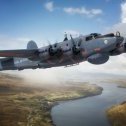

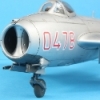


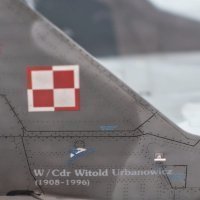
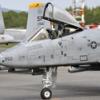
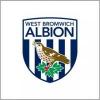
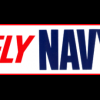

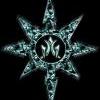
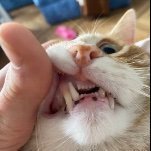
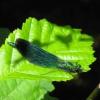


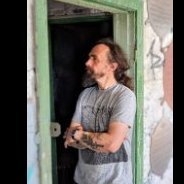

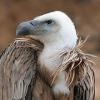
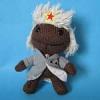


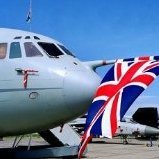
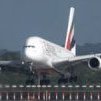

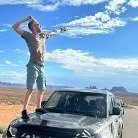
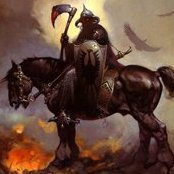
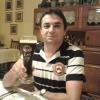

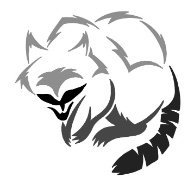
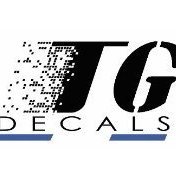
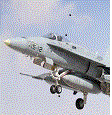

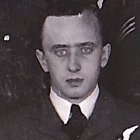
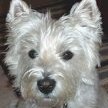
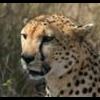

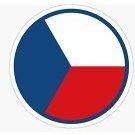
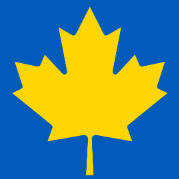
.thumb.jpg.d17ff607fc7e89ed057e63fcb6f2a888.jpg)